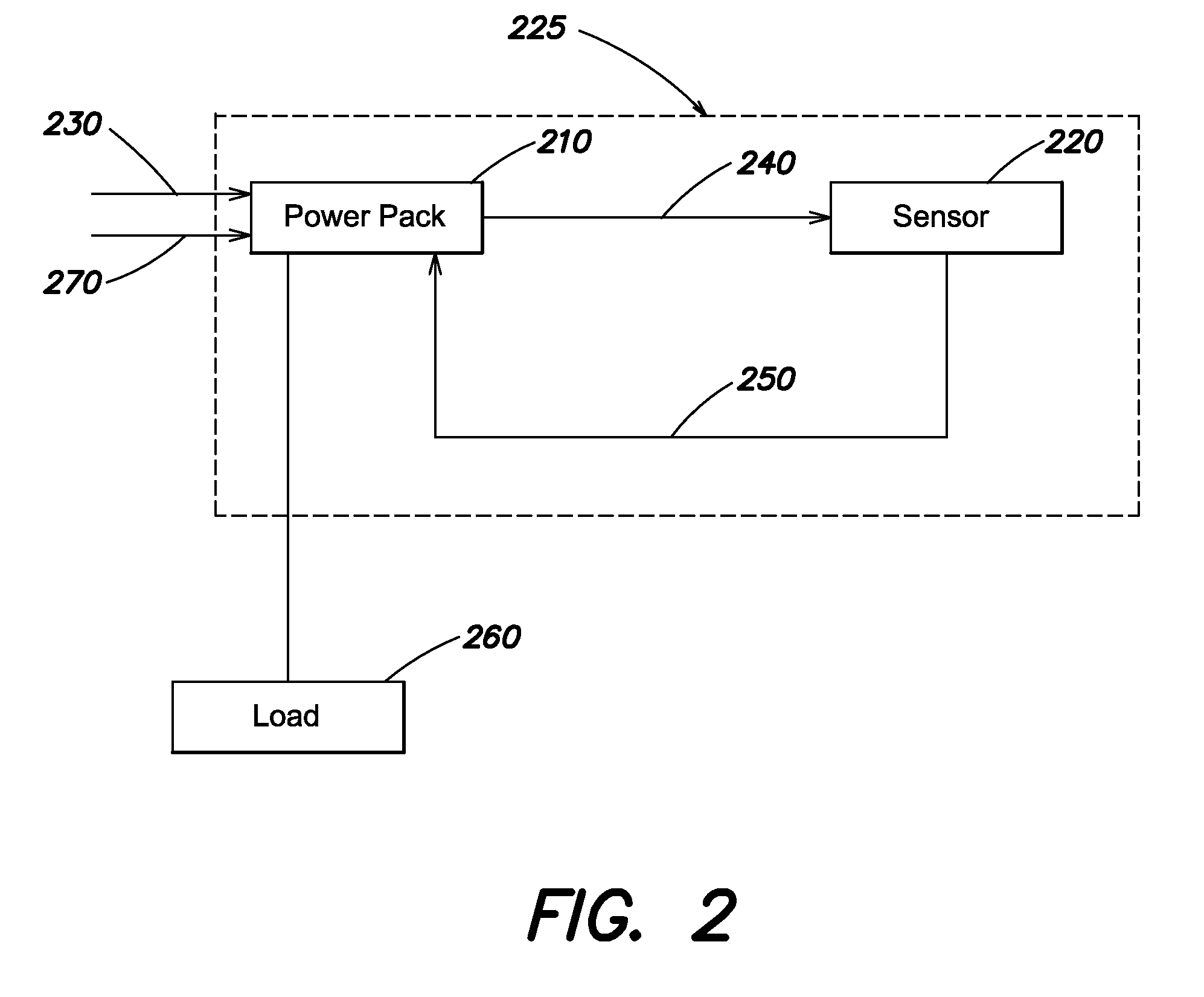Occupancy sensor with embedded signaling capability
a technology of occupancy sensor and signaling capability, applied in the field of occupancy sensor with embedded signaling capability, can solve the problems of achieve the effects of simple energy management, limited energy management capability, and higher level of energy managemen
- Summary
- Abstract
- Description
- Claims
- Application Information
AI Technical Summary
Benefits of technology
Problems solved by technology
Method used
Image
Examples
Embodiment Construction
[0024]The occupancy sensor and power pack combination discussed above with reference to FIG. 1 provides a simple and effective solution to energy savings; however, the solution is limited due to the singular purpose of the signal line 140 and limited functionality of the power pack 110. As discussed above, a conventional power pack 110 provides two functions, namely supplying power to the occupancy sensor 120 and switching an electrical load (e.g., lighting fixture 160) based on an occupancy signal from the occupancy sensor 120. Although this conventional approach provides the most basic functionality for energy management of lighting loads, other desired capabilities are not supported. In addition, many applications would benefit from receiving additional information from the occupancy sensor 120 beyond merely a simple occupancy signal, for example, by allowing for more sophisticated and / or accurate lighting and other systems control.
[0025]Accordingly, aspects and embodiments are d...
PUM
 Login to View More
Login to View More Abstract
Description
Claims
Application Information
 Login to View More
Login to View More - R&D
- Intellectual Property
- Life Sciences
- Materials
- Tech Scout
- Unparalleled Data Quality
- Higher Quality Content
- 60% Fewer Hallucinations
Browse by: Latest US Patents, China's latest patents, Technical Efficacy Thesaurus, Application Domain, Technology Topic, Popular Technical Reports.
© 2025 PatSnap. All rights reserved.Legal|Privacy policy|Modern Slavery Act Transparency Statement|Sitemap|About US| Contact US: help@patsnap.com



